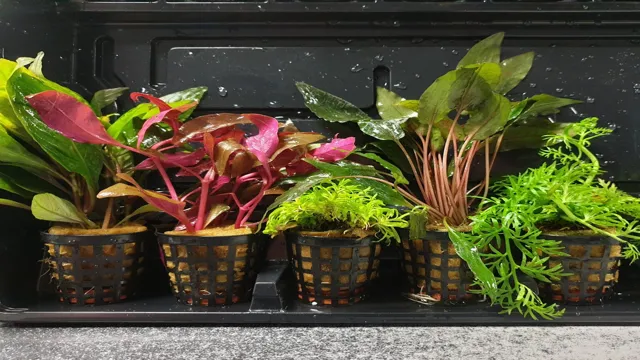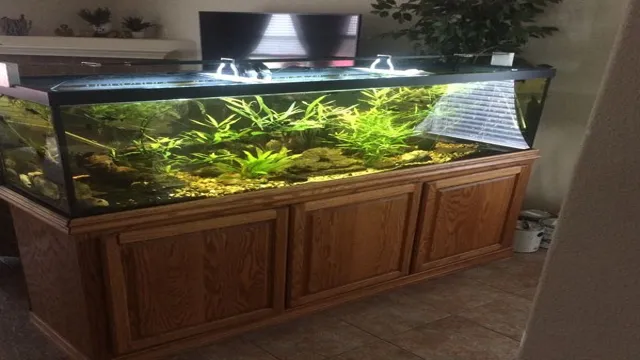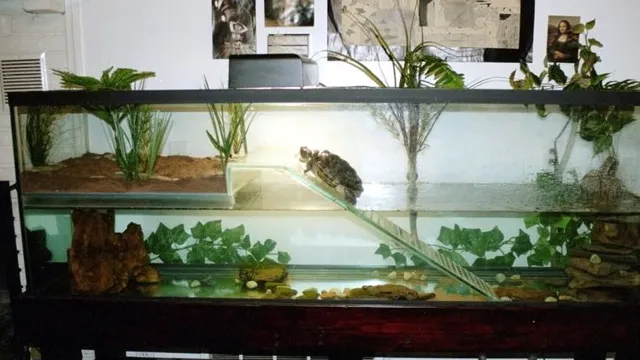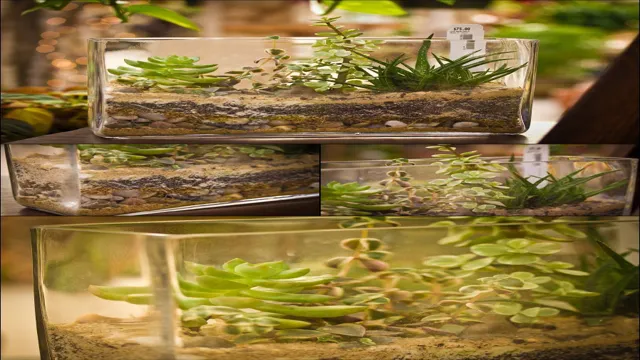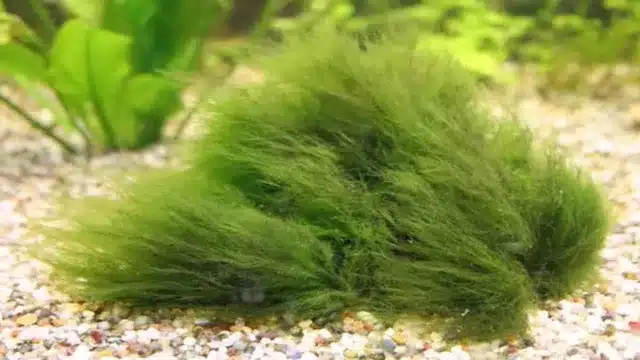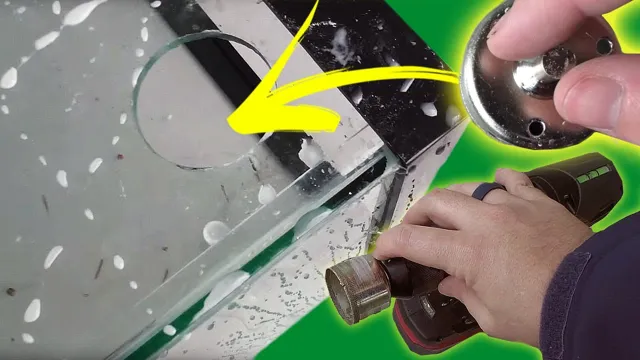If you’re a new aquarium owner, the idea of potting aquarium plants may seem daunting. But don’t worry, it’s a simple and important process that can promote the overall health and beauty of your tank. In this guide, we’ll go over everything you need to know about potting aquarium plants, from selecting the right pot and soil to proper placement and maintenance.
So whether you’re looking to add some greenery to your underwater paradise or simply want to improve its ecosystem, read on to find out how you can pot aquarium plants like a pro!
Selecting the Right Pot
When it comes to potting aquarium plants, selecting the right pot is crucial for their health and growth. The pot needs to be large enough to accommodate the plant’s root system and allow room for growth. A good pot should also be made of a material that won’t leach harmful chemicals into the water, such as ceramic or glass.
Avoid using plastic or metal pots, as they may contain toxins that can harm your aquatic pets. Additionally, make sure the pot has a drainage hole or is designed for aquatic plants specifically to allow for proper water circulation. Overall, the key to selecting the right pot for your aquarium plants is to prioritize their health and well-being by choosing a pot that is non-toxic, appropriate in size, and allows for proper water flow.
Consider Size and Shape of Pot
When it comes to gardening, selecting the right pot is just as important as selecting the right plant. The size and shape of the pot can have a significant impact on your plant’s growth and overall health. It’s important to choose a pot that is the right size for your plant – a pot that is too small can restrict root growth, while a pot that is too large can cause over-watering and lead to root rot.
Additionally, the shape of the pot can also be important. If you’re growing a plant with a deep root system, a pot with a narrow base may not be suitable. Similarly, if you’re planting a small herb garden, a pot with a wide base can be helpful.
When selecting your pot, consider the needs of your plant and choose accordingly. By doing so, you’ll be setting your plant up for success and creating an environment in which it can thrive.
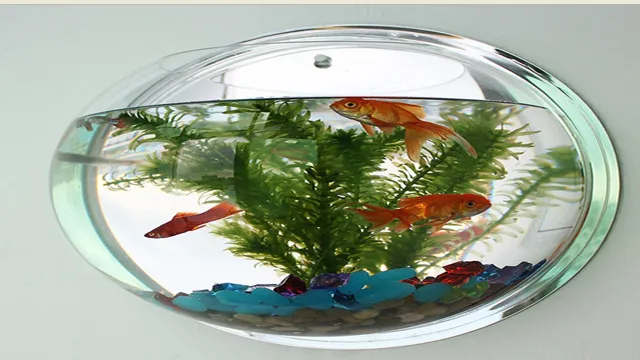
Choose a Pot with Drainage Holes
Choosing the right pot is critical when it comes to taking care of your plants. One of the essential features of a good pot is drainage holes. These holes allow for excess water to escape and prevent your plant’s roots from becoming waterlogged, which could lead to root rot.
Without proper drainage, your plants’ growth can be stunted, and their leaves may begin to yellow. Selecting a pot with drainage holes is easy and can increase the chances of your plant’s success. You can also look for pots with a saucer attached to catch any excess water that drains out.
When buying a new pot, ensure that it has adequate drainage for the specific plant you plan to put in it. It’s always better to go for a slightly larger pot than one that is too small, as this gives the roots more room to grow and can enhance the overall health of your plant. Good drainage leads to a healthier plant, so don’t forget to choose a pot with drainage holes!
Preparing the Pot and Soil
When it comes to potting aquarium plants, it’s essential to prepare the pot and soil properly to ensure your plants thrive. Firstly, choose a pot that’s the right size for the plant you’re potting. You want to give your plant enough room to grow, but not too much that the soil becomes waterlogged and the roots rot.
Next, fill the pot with a high-quality aquarium soil that’s nutrient-rich and specifically designed for aquatic plants. Before adding the soil, rinse it thoroughly to remove any dust or debris that might harm your fish or plants. Once the pot is filled with soil, add water to moisten the soil slightly.
Be sure not to add too much water, as this can lead to waterlogged soil. Finally, gently insert the plant into the pot, being careful not to damage the roots. Be sure to plant your aquarium plant at the right height to avoid covering the crown or burying the roots too deep.
Once the plant is in position, gently press the soil around the roots, being careful not to pack it too tightly. Potting aquarium plants can be a delicate task, but with a little practice and attention, it can be a rewarding part of keeping an aquarium.
Wash Pot and Soak Soil
When it comes to gardening, one of the most crucial elements that cannot be overlooked is preparing the pot and soil. To start, be sure to wash your pot thoroughly to remove any dust, dirt, or bacteria that may have collected on it. Soak the pot in water mixed with a mild detergent, and use a scrub brush to remove any stubborn stains or residue. (See Also: How to Keep Tropical Aquarium Water Clear: Proven Tips and Tricks)
Once the pot is clean, set it aside to dry completely before continuing. Next, it’s time to prepare your soil. The type of soil you select depends on the plants you’re planning to grow, so be sure to choose the appropriate soil for your specific needs.
After selecting the soil, soak it in water to ensure that it is moist and well-hydrated. This will help the plants establish their roots more easily. By taking the time to properly prepare your pot and soil, you are setting yourself up for a successful and healthy garden.
Add Gravel or Sand to Bottom of Pot
Preparing the pot and soil before planting is an essential step towards the healthy growth of your plant. Adding gravel or sand to the bottom of your pot is a common practice that can benefit your plant’s health in multiple ways. Firstly, adding a layer of gravel or sand helps improve the drainage system of your pot.
It helps prevent water from accumulating at the bottom of the pot, which can lead to root rot and damage the plant’s health. Secondly, adding gravel or sand to the bottom can help promote better aeration in the soil. This is because it creates a space between the soil and pot, allowing air to circulate around the roots and prevent them from becoming waterlogged.
When preparing your pot for planting, ensure you add enough gravel or sand to cover the bottom of the container before adding the soil layer. By doing this, your plants will have the perfect environment to thrive.
Fill Pot with Nutrient-rich Substrate
When it comes to preparing a pot for planting, one of the most important steps is filling it with a nutrient-rich substrate. This substrate acts as the foundation for your plant’s growth and provides it with the necessary nutrients and water it needs to thrive. The substrate you choose will depend on the specific needs of the plant you are growing, but in general, you want it to be a mixture of organic matter and other essential plant nutrients.
You can purchase pre-made substrates or mix your own at home using ingredients like compost, vermiculite, and perlite. Whatever method you choose, be sure to fill your pot to the appropriate level, leaving enough space for the plant and any necessary topdressing. By taking the time to properly prepare your pot and substrate, you’ll be setting your plant up for success from the start.
Planting Aquarium Plants
When it comes to planting aquarium plants, there are a few key steps you should follow to ensure success. The first step is to choose the right substrate for your plants. A nutrient-rich substrate like aquasoil or eco-complete can provide your plants with the necessary nutrients for healthy growth.
Once you have your substrate, you’ll want to select the appropriate pots for your plants. These can range from simple plastic pots to more decorative options like terracotta or glazed ceramic. Fill your pots with substrate and then gently place your plants into them.
Be sure to prune any damaged or decaying leaves before planting. After planting, make sure to provide your plants with adequate lighting and CO With a little patience and care, your aquarium plants will thrive and provide a beautiful and healthy environment for your fish.
Trim Plant Roots and Leaves
When it comes to planting aquarium plants, it’s important to pay attention to the roots and leaves. Before planting, trim any roots that are too long or tangled to ensure that they fit comfortably in the substrate. This will also help prevent any excess nutrients from being released into the water.
Additionally, trimming any damaged or yellowing leaves will help promote healthy growth and prevent the spread of disease. When planting, make sure to bury the roots firmly in the substrate and avoid overcrowding to ensure adequate space for each plant to thrive. Taking these steps will not only enhance the aesthetic appeal of your aquarium, but also promote a thriving underwater environment for your aquatic pets.
So go ahead, give your plants the attention they deserve and watch your aquarium come to life! (See Also: How to Avoid Cloudy Water in Aquarium: Tips and Tricks to Keep the Water Crystal Clear)
Plant Plants in Potting Soil and Position in Aquarium
Planting aquarium plants is a rewarding experience that not only enhances the visual appeal of your aquarium but also benefits the health of your fish. To get started, choose the right kind of plants suitable for your aquarium size and lighting conditions. Once you have selected your plants, it’s time to plant them in a potting soil.
Rinse the plants under running water to remove any unwanted debris and gently remove the plants from their plastic containers. Use a small pair of scissors to trim the roots, and then place the plants in the potting soil, making sure that the roots are well-covered. Once done, carefully place the plant pots in your aquarium and position them according to your preference.
Remember to take the time to research the ideal placement for each plant, ensuring that their specific needs are met. By following these simple steps, you’ll be able to successfully plant aquarium plants and create a beautiful underwater world for your fish to thrive in.
Maintenance and Care
If you’re looking to add some greenery into your aquarium, potting aquarium plants is a great way to do it. First, choose the appropriate size pot for the plant you have and rinse it thoroughly. Then, fill it with a nutrient-rich soil that’s suitable for aquarium plants.
Make a small hole for the plant, being careful not to damage its roots in the process. Gently place it into the hole, filling any empty space with soil. Finally, submerge the pot in your aquarium and adjust the plant as necessary.
Be sure to regularly check on the plant and its pot to ensure it’s not causing any harm to your fish or other inhabitants. Potting aquarium plants is a simple and effective way to add some natural beauty to your aquarium and keep it healthy.
Regularly Fertilize Plants
Regularly fertilizing your plants plays a crucial role in keeping them healthy and vibrant. While some plants may not need frequent fertilization, others require it for optimal growth. Fertilizers provide essential nutrients like nitrogen, phosphorus, and potassium that plants need to thrive.
These nutrients not only improve the plant’s overall health but also increase their resistance against pests and diseases. For indoor plants, it’s advisable to use slow-release fertilizers instead of fast-acting ones to avoid burning the roots. Applying too much fertilizer can also harm your plants.
Before fertilizing, read the instructions on the packaging and follow the recommended dosage. Remember, each plant has unique needs, so the frequency and amount of fertilizer application may vary. Regular fertilization will ensure that your plants stay healthy and beautiful all year round.
Monitor Water Quality and Adjust Lighting
Aquarium maintenance and care is essential to the health and well-being of your aquatic pets. Two important aspects of maintenance include monitoring water quality and adjusting lighting. The water in your aquarium should be regularly tested for pH, ammonia, nitrate, and nitrite levels.
These levels can impact the health of your fish and other aquatic life. If levels are outside of the recommended range, water changes and chemical treatments may be necessary. Additionally, adjusting the lighting in your aquarium can impact the health of your aquatic pets.
Too much light can cause excessive algae growth, while too little light can inhibit plant growth. Finding the right balance of lighting can be achieved through trial and error and consulting with a professional. By regularly monitoring water quality and adjusting lighting, you can ensure a healthy and thriving aquatic environment for your pets.
Prune and Trim Plants as Needed
When it comes to maintaining the health and beauty of your plants, pruning and trimming are essential tasks that must not be overlooked. Firstly, pruning refers to the selective removal of specific plant parts, such as branches or stems, for the purpose of improving the overall health, growth, and aesthetical appeal of the plant. Trimming, on the other hand, refers to the cutting back of overgrown or dead plant parts to promote healthy growth and prevent the risk of disease.
Both tasks involve the use of gardening tools such as shears, pruners, or saws, and should be done with care and precision to avoid damaging your plants. It’s important to note that different plants have specific pruning and trimming requirements, so it’s always a good idea to do some research beforehand or consult a professional gardener. In summary, regular pruning and trimming are vital for the well-being of your plants and will help keep your garden looking beautiful and healthy year-round. (See Also: How to Put Calcium in Aquarium for Snails: A Comprehensive Guide)
Conclusion
In conclusion, potting aquarium plants is no simple task. It requires careful consideration and attention to detail to ensure a healthy and thriving aquatic environment. However, with a bit of patience and some creativity, anyone can become a master potter of aquarium plants.
Remember to choose the right substrate, select the appropriate species for your tank, and take care to properly acclimate your plants to their new home. With these tips in mind, your aquarium is sure to become a stunning underwater oasis that will be the envy of all your aquatic-loving friends. So plant away, my friends! Your fish will thank you for it.
“
FAQs
What type of substrate is best for planting aquarium plants?
A nutrient-rich substrate like fluorite or aqua soil is best for planting aquarium plants as it provides essential nutrients for growth.
Should I use CO2 injection for my planted aquarium?
While not necessary, CO2 injection can greatly benefit the growth and health of aquarium plants. Consider using it for faster and fuller growth.
How often should I fertilize my aquarium plants?
It depends on the specific needs of your plants. Generally, once a week is sufficient for most aquarium plants, but some may require more frequent fertilization.
Can I use tap water to water my plants in the aquarium?
Yes, but it’s important to treat tap water with a dechlorinator before using it in your aquarium to avoid harming your plants and fish.
What is the best lighting for growing aquarium plants?
Bright, full-spectrum lighting is best for growing aquarium plants. LED lights designed for aquariums can provide the necessary light spectrum.
How do I plant aquarium plants properly?
Gently remove the plants from their packaging, bury the roots in the substrate, and ensure that the plant’s stem is above the substrate to prevent it from rotting.
How do I prevent algae growth in my planted aquarium?
Maintaining proper lighting, fertilization, and water quality can help prevent algae growth in a planted aquarium. Consider also adding algae-eating fish or invertebrates to help control algae levels.

